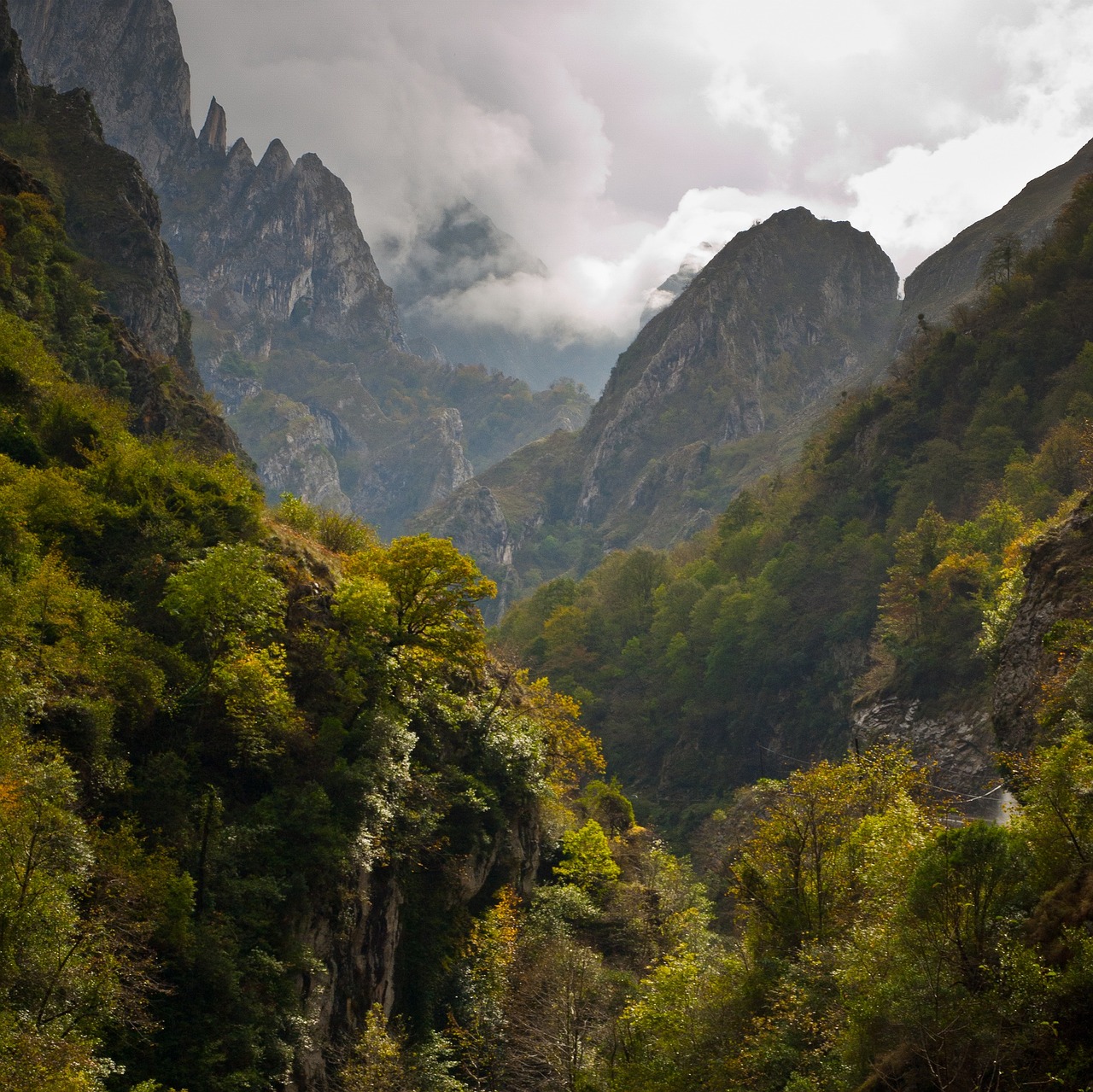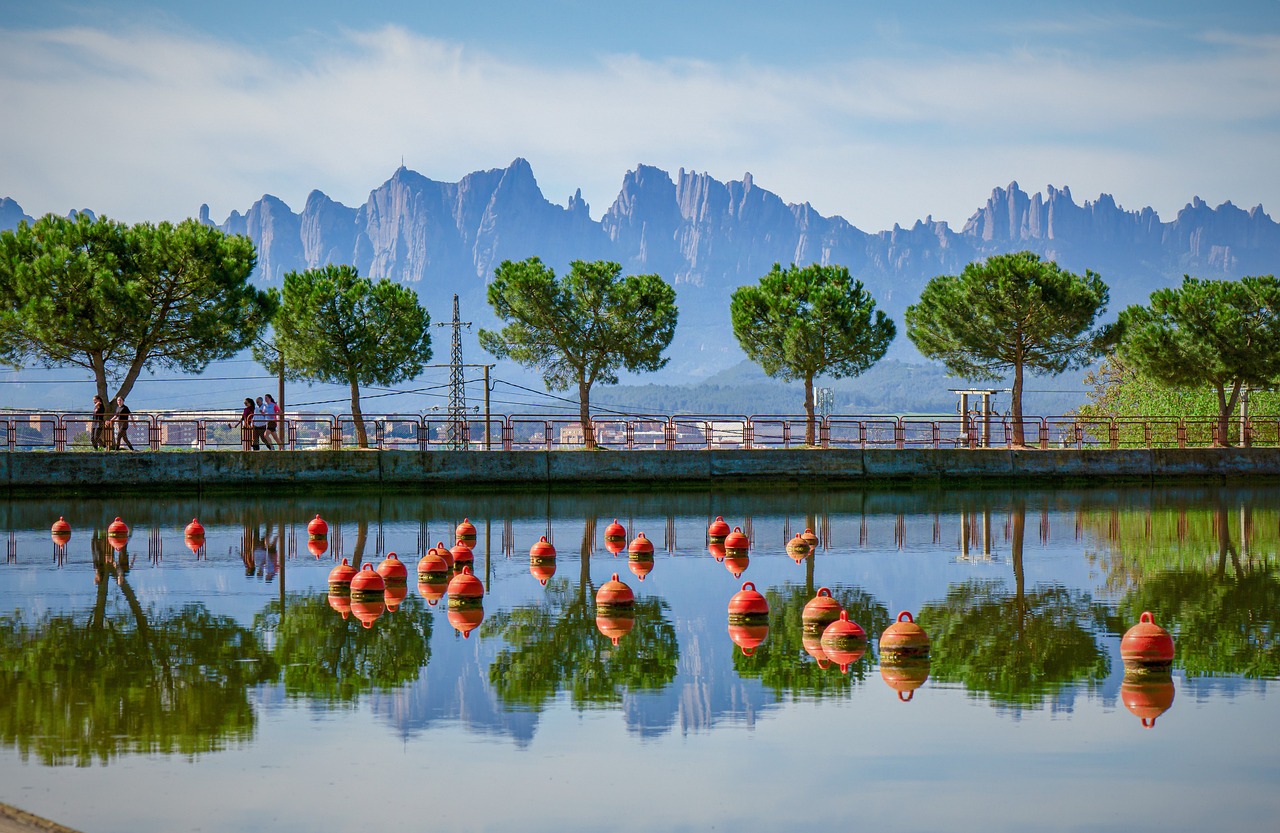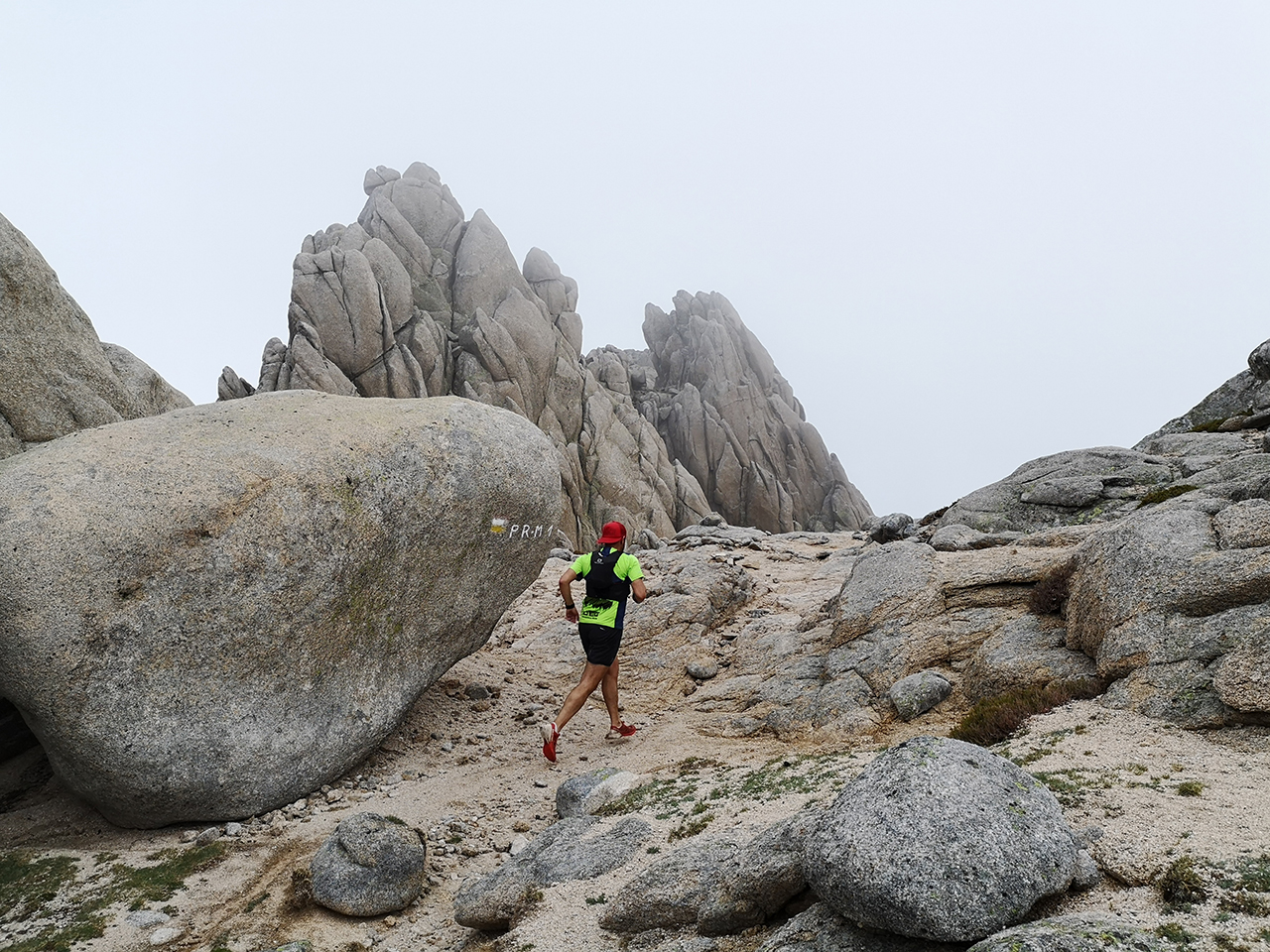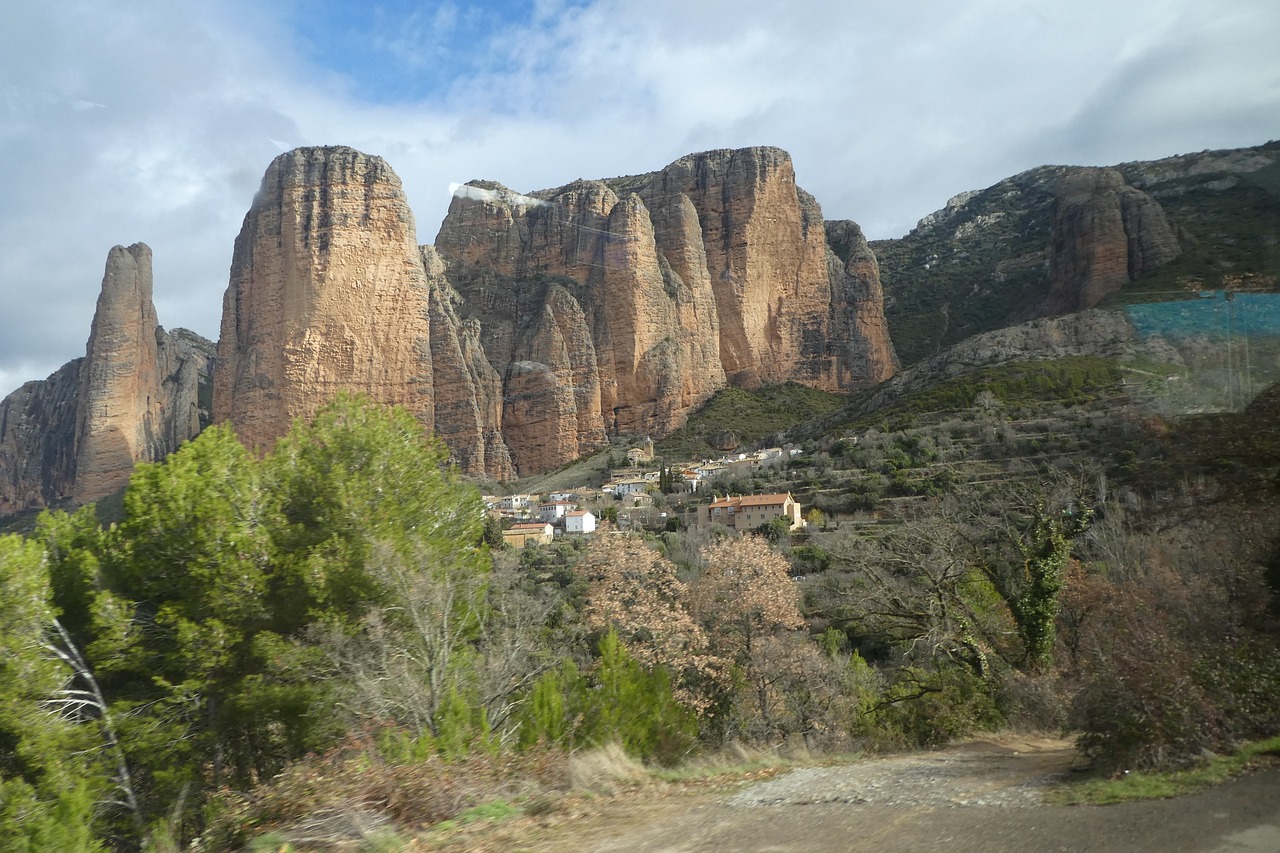Introduction
Nestled in the heart of Western Europe, Spain stands as a testament to nature’s grandeur. With its vast landscapes ranging from sun-kissed beaches to snow-capped peaks, Spain’s geographical diversity is nothing short of breathtaking. But beyond its picturesque coastlines and vibrant cities lies a rugged terrain that beckons adventurers and climbers from around the world.
For those with a passion for heights and a thirst for challenges, the allure of Spanish mountains is undeniable. Each mountain range, with its unique topography and cultural significance, offers a distinct climbing experience. Whether you’re a seasoned climber seeking the thrill of a challenging ascent or a beginner looking to experience the magic of the mountains, Spain has something to offer.
The country’s mountainous regions are not just about the physical challenge; they’re a journey through time. From ancient trails once trodden by shepherds and traders to paths that have witnessed battles and pilgrimages, every climb is a step into history. The mountains have been silent witnesses to the ebb and flow of civilizations, each leaving its indelible mark.

Moreover, organizations like the Spanish Mountaineering Federation (FEDME) play a pivotal role in promoting safe climbing practices while ensuring that these natural wonders are preserved for future generations. They offer guidance, training, and resources for climbers of all levels, ensuring that every ascent is both safe and memorable.
In the subsequent sections, we will embark on a journey across Spain’s most iconic mountains, delving into their histories, exploring their trails, and understanding what makes each of them a climber’s dream. So, strap on your climbing gear and let’s begin this exhilarating adventure!
Picos de Europa, Asturias
Nestled in the northern reaches of Spain, the Picos de Europa stand as a majestic testament to nature’s grandeur. These mountains, spanning the regions of Asturias, Cantabria, and Castilla y León, are not just a climber’s paradise but also a treasure trove of history and culture.
Brief history and geography
The Picos de Europa, often referred to as the “Peaks of Europe,” were so named because they were among the first sights of Europe for ships arriving from the Americas. These mountains have witnessed countless tales, from ancient legends of Asturian resistance against Moorish invaders to being a pilgrimage route on the famed Camino de Santiago.
Geographically, the Picos are divided into three massifs: Western (or Cornión), Central (or Los Urrieles), and Eastern (or Andará). The highest peak, Torre de Cerredo, reaches an impressive 2,650 meters. The deep gorges, verdant valleys, and limestone peaks of the Picos are a result of millennia of glacial and erosional activity, creating a dramatic landscape that captivates climbers and tourists alike.

Recommended routes and difficulty levels
For those eager to explore the Picos, there’s a range of routes catering to both novices and seasoned climbers:
- Ruta del Cares – Often dubbed the “Divine Gorge,” this is one of the most popular hikes in the Picos. Stretching over 12 kilometers, it offers stunning views of the Cares River, with a moderate difficulty level suitable for most hikers.
- Naranjo de Bulnes (or Picu Urriellu) – A magnet for professional climbers, this iconic limestone peak offers challenging routes, with the west face being the most difficult. It’s recommended for experienced climbers seeking an adrenaline rush.
- Fuente Dé Cable Car – For those looking for breathtaking views without the climb, the cable car at Fuente Dé ascends 753 meters, offering panoramic vistas of the Central and Eastern massifs.
- Lakes of Covadonga – A relatively easy route, perfect for families or those looking for a leisurely hike, leading to two glacial lakes, Enol and Ercina, set against the backdrop of the mountains.
The Picos de Europa National Park (Official Website) provides detailed maps, safety guidelines, and other essential information for climbers and visitors. It’s always recommended to check weather conditions and seek local advice before embarking on any climb.
The Picos de Europa, with their rich tapestry of history, culture, and natural beauty, offer a climbing experience that’s both challenging and deeply rewarding. Whether you’re scaling the heights of Naranjo de Bulnes or walking the serene trails of Covadonga, the Picos promise an adventure that lingers long in memory.
Sierra Nevada, Andalusia
The southern charm of Spain isn’t just about flamenco dances and sun-kissed beaches. Rising majestically from the heart of Andalusia, the Sierra Nevada mountain range offers climbers a unique blend of challenge and beauty, all set against the backdrop of Spain’s rich Moorish history.

Mulhacén: The highest peak of the peninsula
Named after Muley Hacén, a Nasrid king of Granada who, according to legend, was buried atop this mountain, Mulhacén stands tall at 3,479 meters, making it the highest peak in the Iberian Peninsula. The mountain isn’t just about its impressive height; its slopes and valleys are steeped in history, with remnants of ancient Moorish passages and tales of bygone eras whispered by the winds.
Climbers are often drawn to Mulhacén not just for the bragging rights of conquering the peninsula’s tallest peak, but also for the panoramic views it offers. On a clear day, one can see the Mediterranean Sea to the south and even the distant Rif Mountains of Morocco.
Tips for a safe climb
- Seasonal awareness: The best times to climb Mulhacén are late spring to early autumn. Winter ascents require special equipment due to snow and ice.
- Acclimatization: Given its height, it’s essential to spend a day or two at higher altitudes in the Sierra Nevada region to acclimatize and reduce the risk of altitude sickness.
- Guided tours: Especially for novice climbers, considering a guided tour can be beneficial. Local guides, familiar with the terrain, can provide valuable insights and ensure a safer climbing experience. The Sierra Nevada National Park (Official Website) offers resources and contacts for guided tours.
- Equipment and supplies: Ensure you have the right equipment, including sturdy hiking boots, warm clothing (even in summer, the summit can be chilly), and enough water and food.
- Weather check: The weather can be unpredictable, especially at higher altitudes. Always check the forecast before your climb and be prepared for sudden changes.
- Respect the environment: The Sierra Nevada is a protected national park, home to unique flora and fauna. Climbers should minimize their environmental impact, following the ‘leave no trace’ principle.
In the heart of Andalusia, amidst tales of Moorish kings and ancient battles, the Sierra Nevada challenges and beckons climbers. Whether you’re an experienced mountaineer or a passionate novice, Mulhacén promises an adventure that’s both thrilling and deeply enriching. As you stand atop the Iberian Peninsula’s highest point, with the world spread out below, it’s a moment of triumph, reflection, and deep connection with Spain’s multifaceted heritage.
Montserrat, Catalonia
Nestled just an hour away from the bustling streets of Barcelona, the serrated mountain of Montserrat rises dramatically from the Catalan landscape. More than just a geological wonder, Montserrat is a spiritual beacon, drawing pilgrims and tourists alike with its rich history and breathtaking vistas.

Spiritual and cultural significance
Montserrat, which translates to “serrated mountain,” is not only renowned for its unique topography but is deeply rooted in Catalonia’s spiritual and cultural fabric. At the heart of this mountain lies the Montserrat Monastery, a Benedictine abbey that houses the revered statue of La Moreneta or the Black Madonna. Legend has it that the statue was discovered in a cave in Montserrat in the 9th century, and since then, it has become a symbol of Catalonia and a focal point of pilgrimage. Every year, thousands visit the shrine, seeking blessings, solace, and a connection to the divine.
The mountain and its monastery have also played pivotal roles in Catalan history. During Franco’s regime, Montserrat served as a sanctuary for scholars, artists, and politicians. It became a symbol of Catalan resistance and identity.
Routes and panoramic views
For climbers and hikers, Montserrat offers a plethora of routes, ranging from gentle walks to challenging climbs. The mountain’s unique conglomerate rock formations provide climbers with a distinctive and rewarding experience.
- Sant Jeroni summit: The highest peak of Montserrat, Sant Jeroni offers panoramic views that stretch from the Pyrenees to the Mediterranean. The hike to the summit is moderate and well-marked.
- Via Ferrata de les Dames: A more challenging route, this climbing path offers vertical ascents and thrilling traverses, all while providing climbers with stunning views of the monastery and the surrounding landscape.
- The hermitage route: A gentler walk that takes visitors past several of Montserrat’s ancient hermitages, offering a glimpse into the mountain’s spiritual past.
For those less inclined to hike or climb, the Montserrat Rack Railway (Official Website) offers a comfortable ride up the mountain, ensuring everyone can enjoy the spectacular views.

Montserrat is more than just a mountain. It’s a tapestry of nature, history, and spirituality. Whether you’re scaling its heights, exploring its historical sites, or simply soaking in its serene ambiance, Montserrat promises an experience that resonates deeply and lingers long after the journey is over.
La Pedriza, Madrid
Nestled in the Sierra de Guadarrama, just a stone’s throw away from the bustling heart of Madrid, lies La Pedriza. This vast granite labyrinth, with its whimsical rock formations and sprawling landscapes, has earned its reputation as Spain’s premier bouldering destination.

The bouldering paradise in Spain
Bouldering, a form of rock climbing that involves scaling natural rock formations without the use of ropes or harnesses, has seen a surge in popularity over the years. And in Spain, La Pedriza stands as a testament to this sport’s allure. The area boasts over 1,000 bouldering problems, catering to climbers of all skill levels. Its granite rocks, with their unique textures and shapes, provide challenges that are as diverse as they are thrilling.
What sets La Pedriza apart from other climbing destinations is its sheer variety. From slabs and vertical walls to overhangs and highballs, the area offers a rich tapestry of challenges. The rock’s frictional quality, combined with the region’s pleasant climate, makes it a year-round attraction for climbers from around the world.
Highlighted areas and routes
- El Elefante: Resembling an elephant, this iconic rock formation is a must-visit. It offers a mix of routes, from beginner-friendly problems to more advanced challenges.
- La Maza: Known for its high concentration of problems, this area is perfect for those looking to test their skills and endurance.
- El Pájaro: This area, with its distinctive bird-like rock formation, offers routes that are both visually stunning and physically demanding.
- Las Buitreras: A slightly more secluded area, Las Buitreras is perfect for those looking for a quiet climbing experience. Its routes are diverse, with a mix of slabs, overhangs, and vertical walls.

For those new to bouldering or looking to hone their skills, several local organizations offer guided tours and training sessions. One such organization is Madrid Climbing (Official Website), which provides tailored experiences for climbers of all levels.
La Pedriza is not just a climbing destination; it’s a celebration of nature’s raw beauty and human tenacity. Whether you’re a seasoned climber or a curious novice, La Pedriza promises an adventure that is both challenging and profoundly rewarding.
Mallos de Riglos, Aragón
In the heart of Aragón, the towering red conglomerate cliffs of Mallos de Riglos rise dramatically from the landscape, casting their majestic silhouette against the Spanish sky. These iconic formations, with their sheer vertical faces and peculiar shapes, have long been a magnet for climbers and geologists alike.
Unique geological formations
The Mallos de Riglos are a testament to the power of nature and time. Formed millions of years ago, these cliffs are composed of a unique conglomerate rock, a mix of rounded pebbles and a compacted sandy matrix. This combination not only gives the Mallos their distinctive reddish hue but also creates a variety of climbing challenges. The cliffs are punctuated with pockets, overhangs, and cracks, offering routes that range from relatively straightforward ascents to some of the most challenging climbs in Spain.
The most iconic of these formations is El Puro, a slender, towering spire that challenges even the most experienced climbers. Its near-vertical ascent and breathtaking height have made it a rite of passage in the climbing community.

Tips and recommendations
- Start early: The Mallos can become quite hot, especially during the summer months. It’s advisable to start your climb early in the morning to avoid the midday sun.
- Equipment: Ensure you have the right equipment. The unique rock formations require a mix of traditional and sport climbing gear.
- Stay updated: The weather can change rapidly in the region. Always check the weather forecast before embarking on a climb.
- Guided climbs: For those unfamiliar with the area or looking to enhance their climbing experience, consider hiring a guide. Aragón Adventures (Official Website) offers guided climbs tailored to different skill levels, ensuring a safe and memorable experience.
- Respect the environment: The Mallos de Riglos is not just a climbing destination but also an ecologically sensitive area. Stick to designated paths, avoid disturbing the local wildlife, and always pack out what you bring in.
- Local Amenities: The nearby village of Riglos offers accommodations and dining options. It’s a great place to relax after a day of climbing and soak in the local culture.
The Mallos de Riglos, with their awe-inspiring beauty and unique climbing challenges, offer an unparalleled experience. Whether you’re scaling the heights of El Puro or simply admiring the view from the ground, the Mallos promise a deep connection with nature and a sense of accomplishment.
Urkiola, Basque Country
Nestled in the heart of the Basque Country, the Urkiola mountain range stands as a sentinel, guarding the rich tapestry of myths and legends that have been woven into its rugged slopes. This mountain range, with its distinctive limestone peaks, offers not just a physical challenge for climbers but also a spiritual journey into the heart of Basque folklore.
Myths and legends of the mountain
The Urkiola range is steeped in mythology, with tales that have been passed down through generations. The most famous legend revolves around Mari, the principal goddess in Basque mythology. Often depicted as a beautiful woman who resides deep within the caves of the mountains, she’s believed to control the weather, and her moods can dictate whether the region will experience sunshine or storms.
Another legend speaks of the gentiles, giant-like figures who once inhabited the Basque lands. These mysterious beings, known for their immense strength and knowledge of hidden treasures, are said to have disappeared into the mountains of Urkiola, leaving behind only the iconic rock formations as a testament to their existence.

Best times to climb
- Spring (april to june): The weather is mild, and the mountain slopes are adorned with a fresh bloom of wildflowers. This is arguably the most picturesque time to experience Urkiola.
- Autumn (september to november): The fall brings a riot of colors as the deciduous trees in the region shed their leaves. The temperatures are cooler, making it ideal for climbing.
- Summer and winter: While summer offers longer daylight hours, it can also bring unpredictable storms, especially in the afternoons. Winter, on the other hand, can be quite challenging due to snow and icy conditions. However, for experienced climbers seeking a challenge, this can be an exhilarating time to scale the peaks.
Recommendations: Before embarking on a climb, it’s advisable to check the weather forecast and consult local climbing associations for updates on trail conditions. The Basque Mountaineering Federation (Official Website) offers valuable resources and guidelines for climbers of all levels.
Urkiola is not just a mountain range; it’s a living testament to the rich cultural and spiritual heritage of the Basque Country. Climbers are not just scaling peaks; they’re walking through pages of ancient folklore, with every step echoing the legends of yore. Whether you’re drawn to Urkiola for its climbing challenges or its mythical allure, it promises an experience that’s both profound and unforgettable.
Sierra de Gredos, Castilla y León
The Sierra de Gredos is a rugged mountain range that stretches across the heart of Castilla y León, offering climbers a blend of natural beauty and challenging ascents. With its snow-capped peaks, glacial lagoons, and dense pine forests, Gredos is a testament to Spain’s diverse landscapes and rich biodiversity.

Almanzor: a challenge for experienced climbers
Standing tall at 2,592 meters, Almanzor is the highest peak in the Sierra de Gredos and a beacon for climbers seeking a formidable challenge. Its name, derived from the Arabic term for ‘victor’, is a fitting tribute to the mountain’s imposing stature. The ascent to Almanzor’s summit is not for the faint-hearted. Steep crags, narrow ledges, and the ever-present threat of sudden weather changes make this climb a test of both physical endurance and mental fortitude.
For those who conquer its heights, the rewards are unparalleled: panoramic views of the Iberian Peninsula, a sense of accomplishment, and a deeper connection to Spain’s ancient geological history.
Flora and fauna in the area
The Sierra de Gredos is a haven for biodiversity. As climbers ascend its slopes, they’ll traverse a variety of ecosystems, each with its unique flora and fauna.
- Flora: The lower altitudes are dominated by holm oaks and chestnut trees, giving way to Scots pines and pyrenean oaks as one climbs higher. The alpine meadows, known as ‘borreguiles’, burst into color during spring with a variety of endemic flowers like the Gredos poppy and the black lily.
- Fauna: The region is home to the Iberian ibex, a species of wild goat that can often be spotted gracefully navigating the rocky crags. Birds of prey, such as the golden eagle and griffon vulture, soar overhead, while the clear mountain streams teem with trout.
For those interested in guided tours or more information on the region’s biodiversity, the Gredos Mountain Interpretation Center (Official Website) in Hoyos del Espino offers valuable insights and resources.
The Sierra de Gredos, with its majestic Almanzor peak, offers climbers an experience that goes beyond the physical ascent. It’s a journey through time, tracing the footsteps of ancient glaciers, and a communion with nature, where every step brings one closer to the heart of Spain’s wild beauty.
General tips for climbing in Spain
Equipment and safety
When embarking on a climbing adventure in Spain, it’s paramount to be well-prepared. The diverse range of mountains means that each climb can present its unique challenges. Always ensure you have the right equipment. This includes appropriate footwear, climbing gear tailored to the specific type of climb, and weather-appropriate clothing. Helmets are a must, as are harnesses for more challenging ascents.
Before setting out, always check the weather forecast for the region. Spain’s mountainous areas can experience sudden weather shifts, especially at higher altitudes. If you’re unfamiliar with the area, consider hiring a local guide. Organizations like the Spanish Mountain Guides Association (Official Website) can provide certified professionals who know the terrain and can ensure a safer climbing experience.
Respect for the environment and local regulations
Spain’s mountains are not just tourist attractions; they’re also delicate ecosystems and often hold spiritual or cultural significance for locals. Always stick to marked paths to minimize environmental impact. Avoid leaving any waste behind – remember the climber’s adage: “Take only pictures, leave only footprints.”
Many climbing areas in Spain are protected natural spaces with specific regulations to preserve their beauty and ecological balance. Before climbing, familiarize yourself with local rules. This might include restrictions on camping, making fires, or even climbing during certain periods to protect nesting birds.
Conclusion
Spain’s natural wealth as a climbing destination
From the rugged peaks of the Pyrenees to the sun-kissed cliffs of Andalusia, Spain offers a climbing experience like no other. Each mountain, with its unique character and challenges, tells a story of the country’s rich geological and cultural tapestry.
An invitation to discover and respect the spanish mountains
To climb in Spain is to engage in a dialogue with its land – a land that has been revered, feared, and celebrated for centuries. As you ascend its peaks, remember that you’re not just conquering a physical challenge but also becoming a part of Spain’s age-old relationship with its mountains. We invite you to discover, respect, and cherish these natural wonders, ensuring they remain for future generations of climbers to enjoy.





